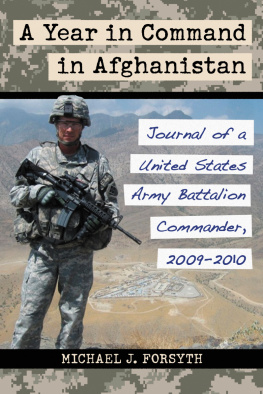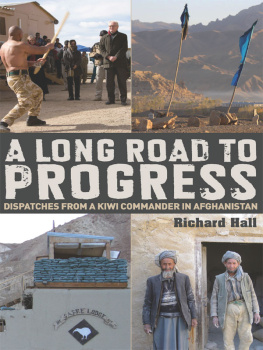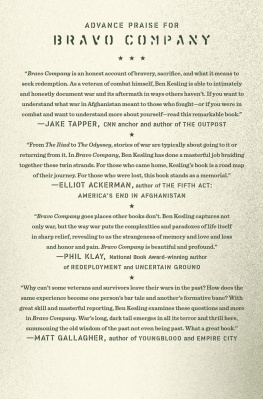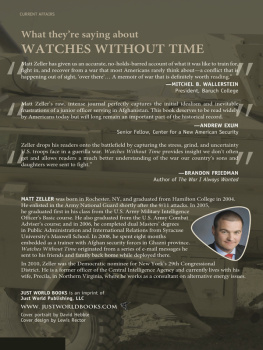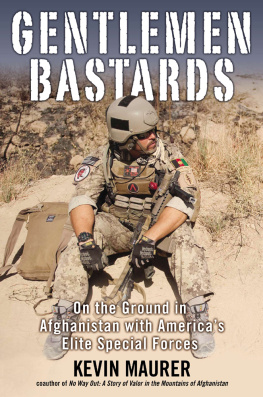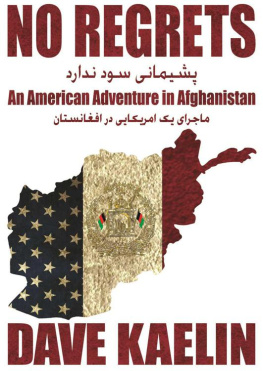
Also by MICHAEL J. FORSYTH
AND FROM MCFARLAND
The Great Missouri Raid: Sterling Price and the Last Major Confederate Campaign in Northern Territory (2015)
The Camden Expedition of 1864 and the Opportunity Lost by the Confederacy to Change the Civil War (2003; softcover 2008)
The Red River Campaign of 1864 and the Loss by the Confederacy of the Civil War (2002; softcover 2010)
A Year in Command in Afghanistan
Journal of a United States Army Battalion Commander, 20092010
Michael J. Forsyth

McFarland & Company, Inc., Publishers
Jefferson, North Carolina
The thoughts expressed in this book are the authors only and do not reflect the official policy of the United States Department of Defense.
LIBRARY OF CONGRESS CATALOGUING DATA ARE AVAILABLE
BRITISH LIBRARY CATALOGUING DATA ARE AVAILABLE
e-ISBN: 978-1-4766-0109-0
2017 Michael J. Forsyth. All rights reserved
No part of this book may be reproduced or transmitted in any form or by any means, electronic or mechanical, including photocopying or recording, or by any information storage and retrieval system, without permission in writing from the publisher.
Front cover: The author on patrol overlooking Forward Operating Base Kalagush in Afghanistan (U.S. Army)
McFarland & Company, Inc., Publishers
Box 611, Jefferson, North Carolina 28640
www.mcfarlandpub.com
To the memory of Sergeant Elijah John-Miles Rao,
killed in action on 5 December 2009.
A fine soldier, man, husband and father.
Acknowledgments
When engaging in writing of any significance, there are inevitably numerous people who provide invaluable support. As I worked on recording my thoughts and editing my Afghan journal, several trusted associates and family members were of enormous assistance. I would like to take this opportunity to express my appreciation for helping me to tell a better story.
First, I would like to thank Dr. Dorrie Karolick from the U.S. Air Force Academys Department of Military and Strategic Studies. Upon my arrival at the academy to take up my teaching position, Dr. Karolick made me feel at home and helped me to become an effective instructor. When I mentioned that I was preparing my journal for publication, she graciously consented to read the manuscript. She made a great many suggestions to improve the organization, flow, and diction of the text that I incorporated throughout. Her advice enabled me to make a better product that I hope the reader will find informative and enjoyable.
Several other colleagues here at the Air Force Academy provided advice, support and input as I continued with the book. Lieutenant Colonel Patrick Donley provided me with several unpublished papers that he produced while working as an advisor in the Ministry of Rural Rehabilitation and Development. I drew ideas from these documents as I formulated ways in which we could achieve better results with development in Afghanistan. Drs. John Farquhar and Jim Titus engaged me in many discussions about the situation in Afghanistan, allowing me to crystallize many of my ideas about how diplomatic solutions might alleviate some of the regional tensions associated with the situation in Afghanistan. Our department head, permanent professor and U.S. Air Force Colonel Thomas Drohan, encouraged me to get the story out, and his support facilitated the endeavor.
Next, I would like to thank Captain Matthew Frye, who served as one of my staff officers during our time in Afghanistan. He compiled a pictorial history of the deployment that records what happened in Afghanistan. Most of the photos used in this book are drawn from the archive that he assembled, and therefore I am much indebted to his work in bringing together the pictures.
I would like to thank all of the soldiers and officers of 2nd Battalion, 77th Field Artillery Regiment, along with the members of the regimental association who are veterans of service with the battalion. This book is about the battalions service in Afghanistan, and without the soldiers outstanding performance in training and later in combat there would not be much of a story to tell. All of the soldiers made great contributions for their country that deserve our full recognition.
I could not have accomplished any of this without the support of my wife and children. As hard as deployments to combat are on soldiers, they are infinitely tougher on the families left behind because of the unknowns. Families do not know what is happening on a daily basis in a combat zone and therefore always have nagging anxiety as to what is happening to their soldier, whether parent, child, or spouse. Further, families have to continue with the daily grind of living, which includes managing a household, going to school, working, and caring for children. This is a difficult task, and my family has always handled my deployments readily and with dignity. My wife Maryellen has stood by me for 23 years, providing continuous, faithful support regardless of the challenges associated with being married to a soldier. She has been, and always will be, my stability through all that life brings our way. My son Andrew is now a lieutenant in the Air Force and did a great deal to help my wife during my absence. He is a fine young man and is always there for his mother. Without his stoic sense of responsibility, going to Afghanistan three times would have been far more difficult on my wife and I; his dependability made things infinitely easier. My daughter Ashley was a junior in high school when I deployed. She continued to do well in school and sports and is now headed off to college to swim for Western Kentucky University. Her experience as the child of a deployed soldier has left her with the desire to work with wounded veterans, which she recently did in supporting the Wounded Warrior Games here in Colorado Springs. I am thankful for my family and their continued love and support as I served in Afghanistan and later completed this project.
Finally, I must thank God for looking after our battalion in Afghanistan along with the families of the soldiers. Nothing is possible without Him, and I must note that He is the reason that I am able to accomplish anything.
Preface
I began writing this book in 2008 when I started a journal to record my experiences as a U.S. Army battalion commander. Our Army was (and still is) at war and had been for seven years at that point. The organization was under pressure due to being required to fight on two fronts over an extended period of time. The operational tempo for troops was staggering as they rotated in and out of the combat zone every other year. This practice placed great stress on a small number of American citizens who had volunteered to serve in the military, as well as on their families. My purpose in writing this book was to chronicle the experiences of a fairly typical unit in the U.S. Army from my perspective as a battalion commander. I wrote about the unit and my experiences starting at Fort Carson, Coloradoour home stationas the battalion began to train for deployment to Afghanistan and followed it through our time there and then back home two years later. This volume is a portrait of what the unit had to do to prepare for combat and how the soldiers handled the experience when they were in the crucible. It is also a self-portrait of my thoughts and actions over the course of my command. I do not intend to portray my own experience as anything more than that of a soldier and officer who was determined to do his duty for his country.
Next page
